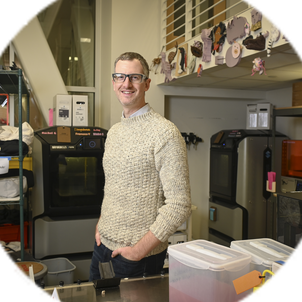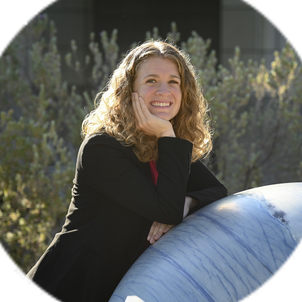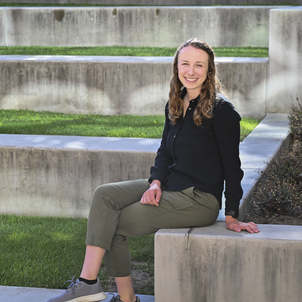I went to a small high school in a small town in rural Catalonia, where we didn’t have a robotics team or many resources for me to explore my interest in robotics. But I was very interested in math, and when my math teacher saw that I was really into exploring applications for math concepts, she suggested that I meet up with her husband, who happened to be a roboticist by hobby. I started going to robotics competitions with him around Spain and continued doing so throughout high school. When I heard about that rover mission, I was so impressed with the science and engineering that went into making something that complex work on another planet. That’s when I knew I wanted to further explore astronautics.
I’m currently working toward my master’s in aeronautics and astronautics at Stanford. I was drawn to this program because the department has a very strong focus on robotics and autonomous systems. Right now at Stanford’s Navigation and Autonomous Vehicles (NAV) Lab, I’m working on something that’s like GPS but for the moon. There are over a hundred missions planned for the moon in the next decade, so we’ll have a lot of satellites and rovers and astronauts going there. On Earth, we’re used to just pulling out our phone and knowing exactly where we are, but on the moon, that’s complicated. Our lab’s goal during this quarter and the next is to develop an open source simulation tool – we tend to use simulations for this sort of thing – so that we can make it available for different researchers to carry out their work on lunar positioning. At previous schools, it was hard for me to gain access to the kinds of projects I’m currently working on, but here at Stanford, this kind of exciting lab work has been a big part of my experience.
Like a lot of people, I see the moon as a stepping stone to Mars and beyond. It’s kind of like a playground where we test out new technologies and missions. Last year, I was part of the winning team in NASA’s 2022 Revolutionary Aerospace Systems Concepts–Academic Linkage (RASC-AL) competition, where the objective was to design architecture that would produce propellant on Mars. That’s crucial because when sending a human-crewed mission to Mars, there needs to be enough propellant for the rocket to get back, and it’s very expensive to send propellants to Mars. Our design focused on using Mars’ resources to see how we can produce propellant from the CO2 in the atmosphere and from the planet’s surface water (or rather, the ice), which has already been found on Mars thanks to the rovers.
Logic and detail analysis are a big part of my work, but I also need to do a lot of creative big-picture thinking. Having a systems-level view so that you don’t miss the forest for the trees is one of the hardest parts of my work, but it’s also the key to successful innovation.
Like a lot of people at Stanford, I really want to use my time and the education I receive here to pursue something bigger. This summer I’ll be interning at NASA’s Jet Propulsion Laboratory, which is where many missions are planned. I’ll be developing algorithms for autonomous space missions to small asteroids and outer solar system planets. I’m very excited, and I really hope I can continue to explore the application of robotics to space exploration in the future.
Related spotlights

Dan Somen

Sonia Martin


